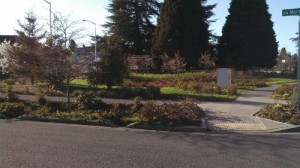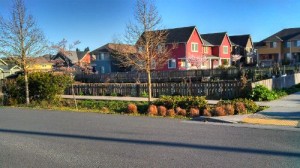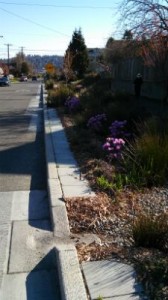
On Thursday, I met with 26 folks from around Washtenaw County to talk about how we can transform stormwater infrastructure from grey to green. In this first of our Growing Green Infrastructure Forums, we talked broadly about the differences between conventional grey stormwater infrastructure (the gutters, ditches and pipes) and green infrastructure (practices using natural landscapes to infiltrate stormwater runoff). We also differentiated the broadly planned green infrastructure (GI) approach from site-focused Low Impact Development (LID) (see our webpage on LID vs GI). Josh Miller, an HRWC intern this year, discussed barriers to GI development that he discovered in interviews and research over the last year. Finally, I gave the group some maps of the watershed in Washtenaw County with GI opportunity areas identified and asked them to think about what was possible in each of their jurisdictions.

There was quite a bit of good discussion about what is possible and what is holding GI development back. It was clear from the discussion that the GI approach to stormwater management is being applied all around us and throughout the country. There is ample information about the water quality, aesthetic and economic benefits of the GI approach, and its applicability in the upper midwest. However, local examples need to be better promoted and policies and funding mechanisms like stormwater utilities need to be used more broadly.

All the discussion got me to thinking about a trip my family and I just took to Seattle and Vancouver earlier this Spring. There, GI is the norm rather than the exception for new projects and redevelopment. Neighborhoods around the city are vibrant, active and becoming even greener than they were (see photos). People there strongly identify with and take advantage of their connection with water, and this mindset drives their commitment to address what, according to the US EPA, is the greatest source of water pollution in the country — stormwater runoff. Sure, the Emerald City is not SE Michigan, but as Scott Dierks said at the Forum, “rain is the same, good-draining soils are the same, and deep-rooted plants all crave water the same.”
It is time for us to acknowledge that Seattle, Philadelphia, Chicago and Milwaukee are no longer the exceptions, and get to work greening our stormwater systems. Those who participated in the Forum are making a good start in their communities in Washtenaw County.



